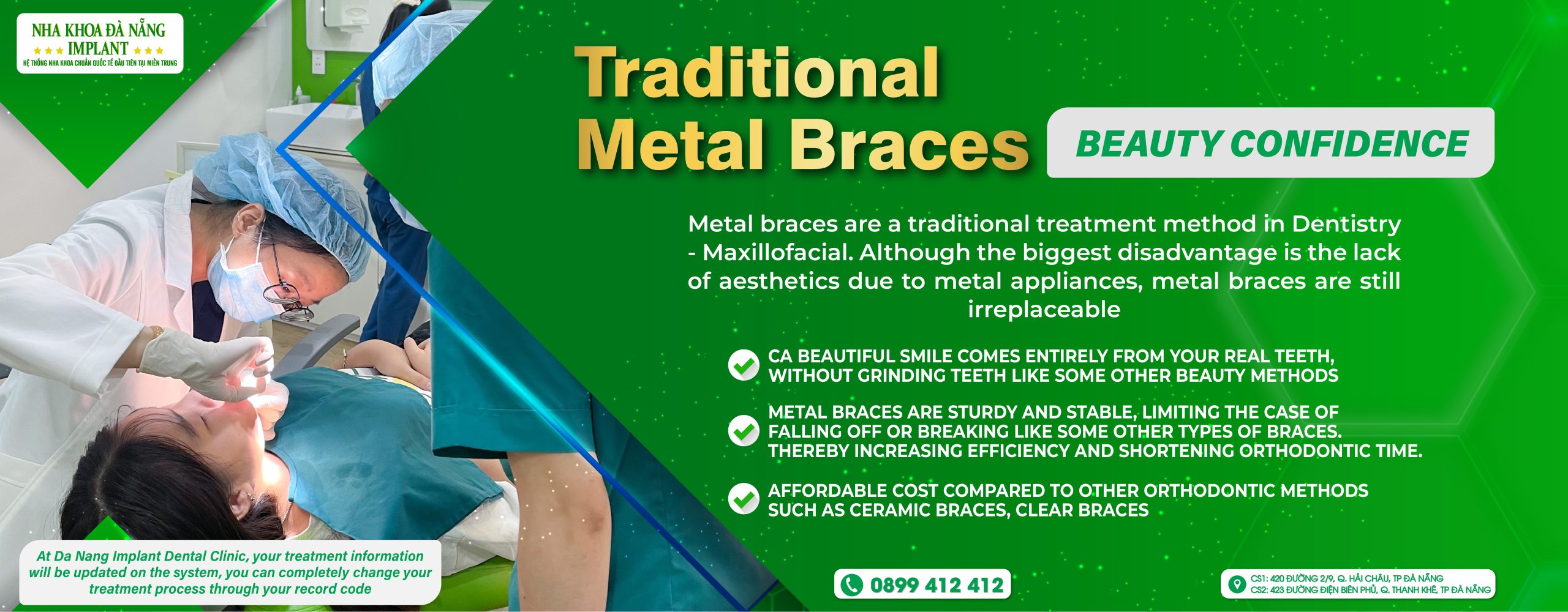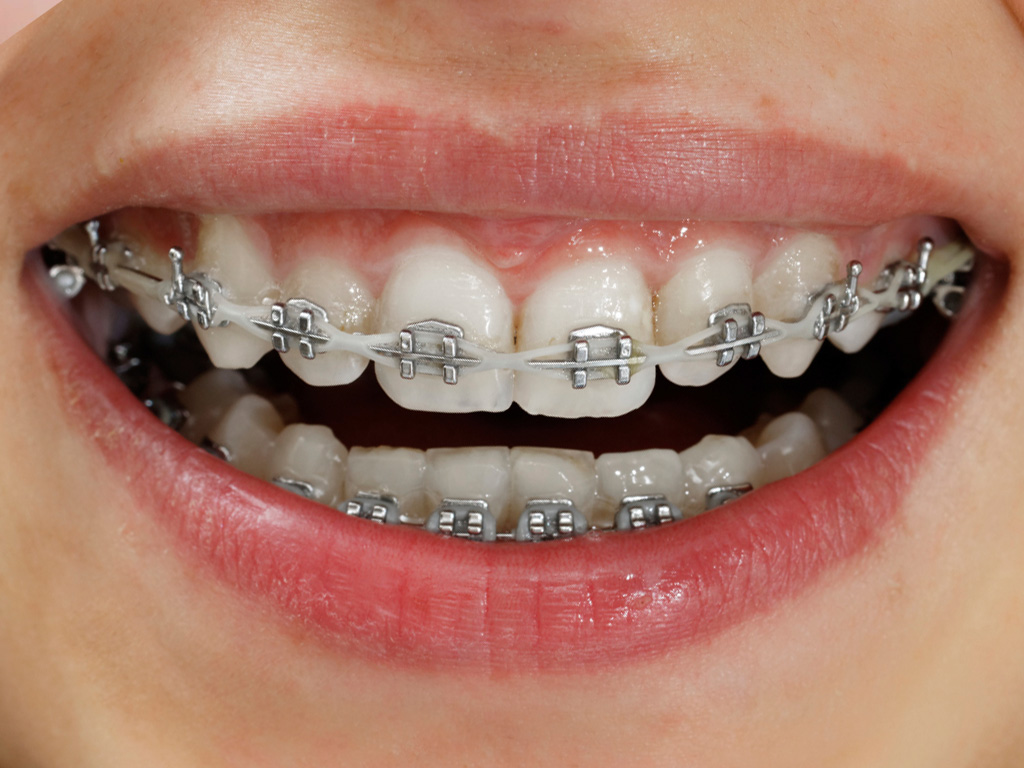Traditional metal braces use a system of metal arch wires and brackets for the purpose of aligning teeth and adjusting bite.

Traditional Metal Braces
Person who has overbite (class II) or crossbite (class III) of mild and moderate severity.
Person who has deep overbite or crossbite which the bone has developed a deviation (underdevelopment or overdevelopment) that orthodontic treatment cannot compensate should choose braces combined with cosmetic jaw surgery.

Traditional metal braces use a system of metal arch wires and brackets for the purpose of aligning teeth and adjusting bite.
Nowadays, dentists can give you a confident smile with shiny teeth in just one week with all-ceramic restorations or porcelain veneers; however, there are some advice before choosing these methods:
If you are afraid of much real teeth grinding or sensitive feeling, all-ceramic dental restorations are not a good choice.
If your teeth are too displaced, it is not possible to perform a porcelain veneer restoration because we cannot tooth grinding too much (average 0.3 – 0.5mm). This is not enough to adjust the tooth shaft.
So, why orthodontics with metal braces is “old but never out of date”?
Orthodontics is considered the most complicated technique in dental procedures because it requires deep knowledge of the jaw bone development mechanism, the physiological recovery mechanism, the physical principles for rotating teeth…
From 20,000,000 to 40,000,000 depending on the level of jawbone and teeth deviation
